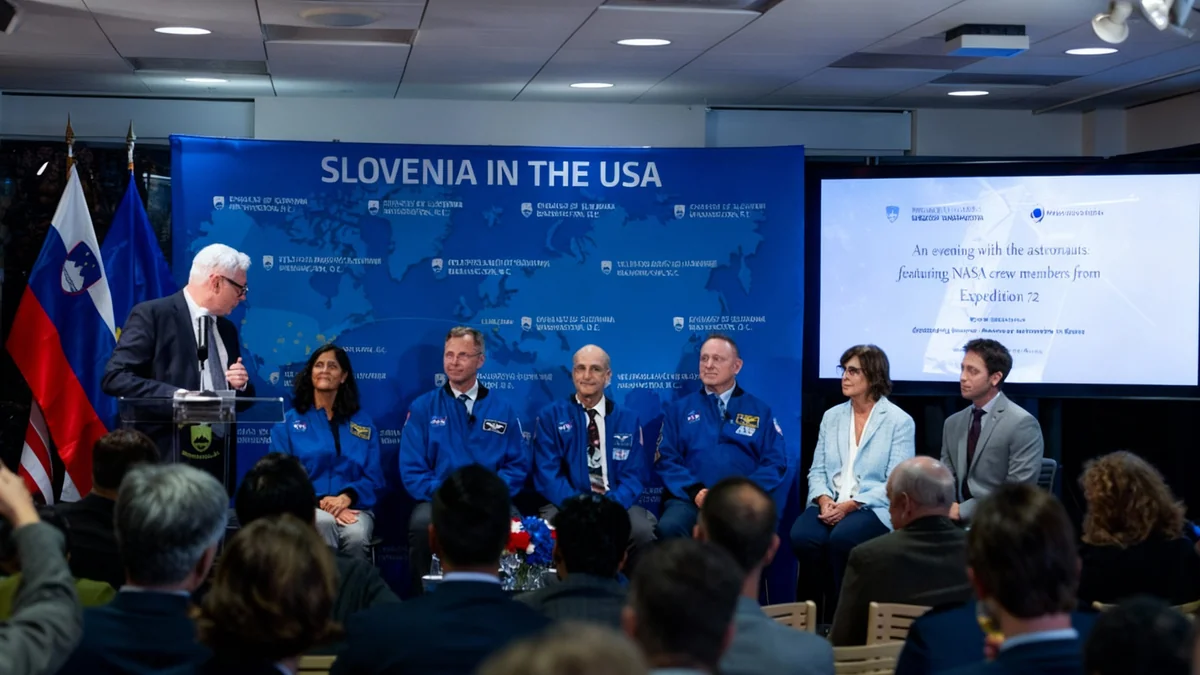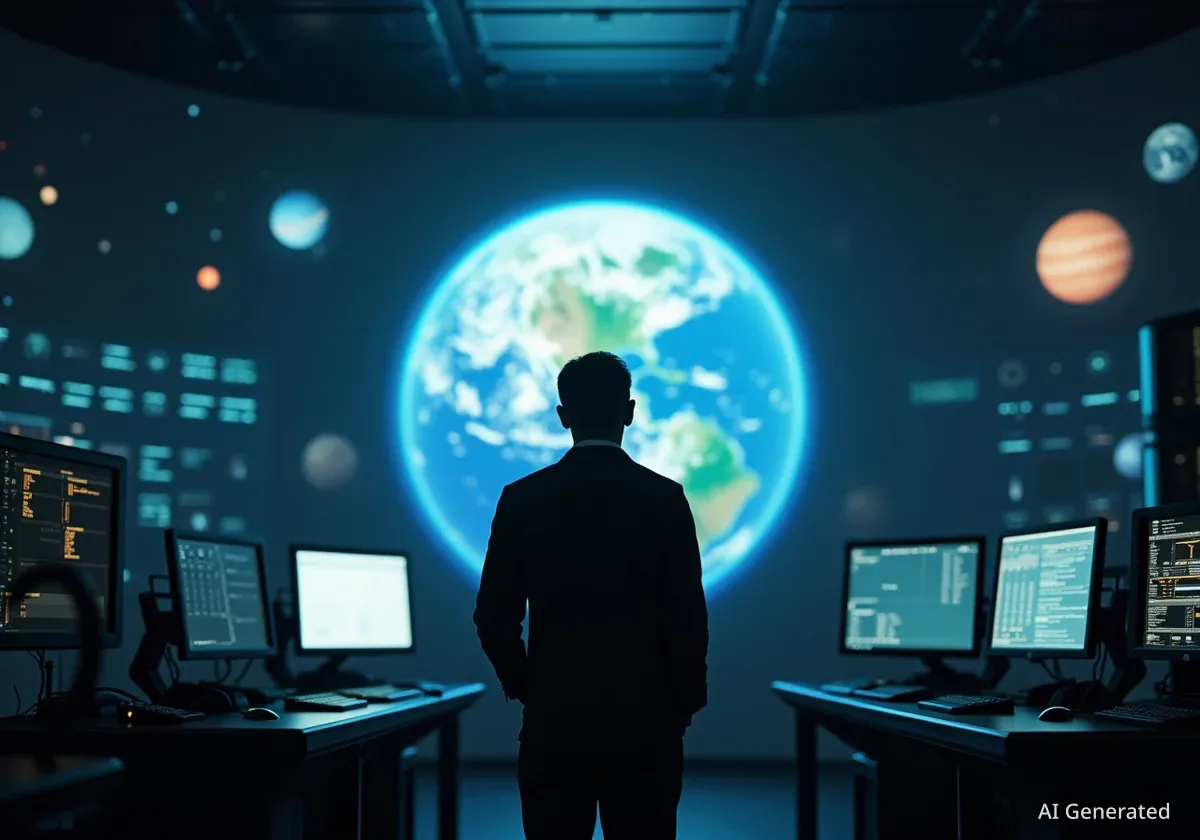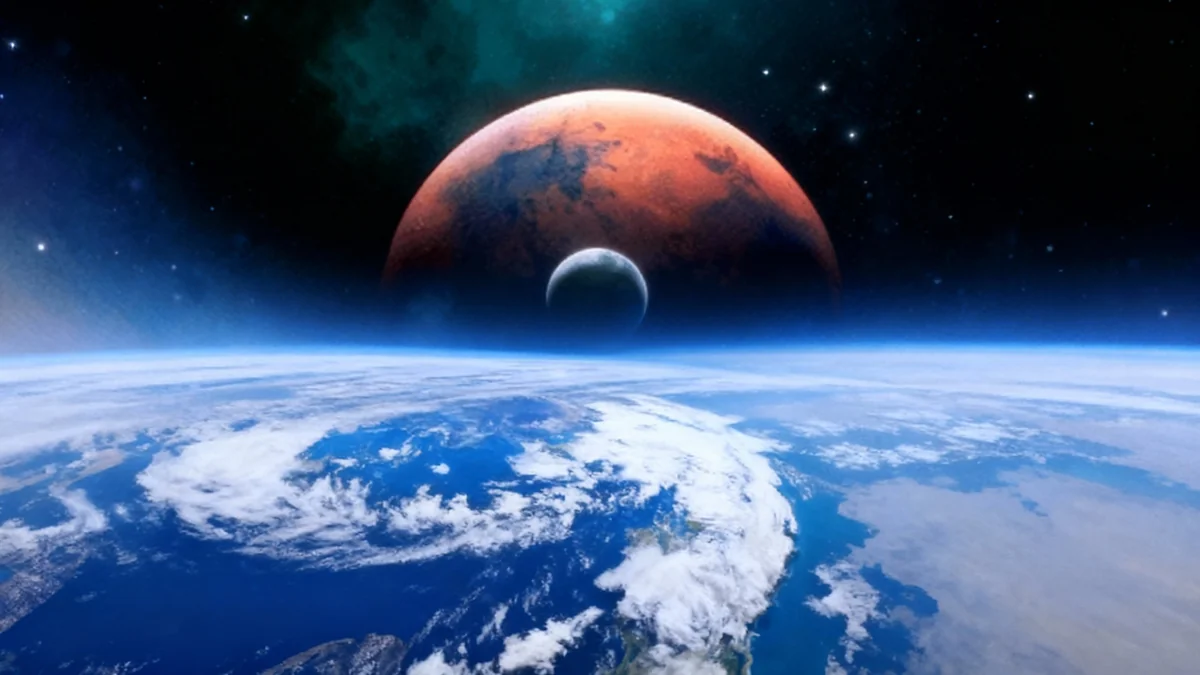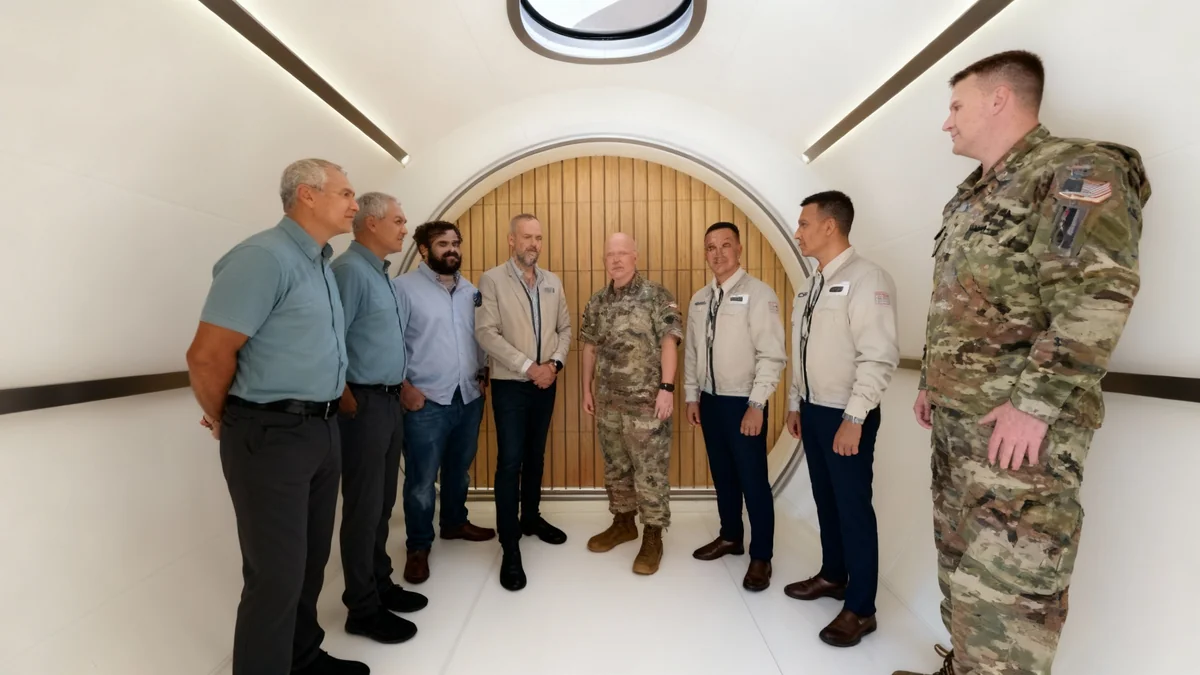WASHINGTON D.C. – In a display of deepening international cooperation in space exploration, NASA astronauts and industry leaders gathered at the Embassy of Slovenia to discuss the future of celestial missions. The event highlighted Slovenia's growing contributions to the aerospace sector and its strategic partnership with the United States.
The panel, held on September 17, featured members of NASA's Expedition 72 crew, including veteran astronaut Sunita Williams, who has Slovenian heritage. The discussion underscored the importance of international collaboration for the long-term success and safety of human spaceflight, particularly as humanity marks nearly 25 years of continuous presence on the International Space Station (ISS).
Key Takeaways
- NASA's Expedition 72 crew, including astronaut Sunita Williams, participated in a panel at the Slovenian Embassy in Washington D.C.
- The event highlighted the growing US-Slovene partnership in space technology, research, and exploration.
- Slovenia's role in the space industry is expanding, marked by its membership in the Artemis Accords and the European Space Agency (ESA).
- Speakers emphasized that international cooperation is essential for astronaut safety and the future of independent space missions.
A Partnership Beyond Earth's Atmosphere
Slovenian Ambassador Iztok Mirošič opened the event, emphasizing the strong ties between the two nations. He noted that collaboration in research, science, technology, and artificial intelligence forms a key pillar of US-Slovene relations. This partnership extends far beyond terrestrial concerns, reaching into the final frontier.
Ambassador Mirošič suggested that diplomats could learn valuable lessons from the collaborative spirit of astronauts. In space, he explained, national and political differences become secondary to the shared mission of survival and discovery. This mindset is crucial for tackling global challenges on Earth.
The event, co-hosted by the Space Foundation, brought together a diverse group of experts. Representatives from NASA's ISS program, SpaceX, and the Slovenian technology company Dewesoft joined the astronauts on stage, painting a comprehensive picture of the public-private ecosystem driving modern space exploration.
The View from 250 Miles Up
The astronauts of Expedition 72, recently returned from a nine-month mission aboard the ISS, shared their unique perspectives. They described how the isolation of space fosters a powerful sense of unity among crew members from different countries. The primary goal, they stressed, is always the safety of everyone on board.
A Quarter-Century in Orbit
Next month will mark 25 years of continuous human presence aboard the International Space Station. This milestone represents one of the most successful and enduring international scientific collaborations in history.
As space missions become more ambitious, aiming for the Moon and Mars, crews will need greater independence from ground control. The astronauts explained that this requires robust international partnerships on Earth to develop the necessary technology and protocols. The collaboration between nations is not just a diplomatic ideal but a practical necessity for future exploration.
Slovenia's Ascent as a Space Power
While a small country geographically, Slovenia is rapidly building a reputation as a significant player in the aerospace industry. Ambassador Mirošič proudly referred to his nation as being “small on Earth, but big in Space.” This statement is backed by a growing list of achievements and strategic commitments.
Slovenia's Space Milestones
Slovenia has actively pursued a role in international space efforts. Key steps include:
- Artemis Accords: Became the 39th signatory in April 2024, committing to peaceful and transparent lunar exploration.
- European Space Agency (ESA): Achieved full membership in January 2025.
- Satellite Program: The country is preparing to launch its fourth satellite in 2025.
- Industry Hub: It hosts numerous small and medium-sized businesses contributing to the global space sector.
The nation's contributions are not limited to policy and manufacturing. Slovenia is also home to planetary habitat simulation facilities, which are crucial for preparing astronauts for long-duration missions on other worlds. This infrastructure provides a vital training ground for future explorers.
A Personal Connection to the Stars
For NASA astronaut Sunita Williams, the connection to Slovenia is personal. Her mother is of Slovene descent, and she is affectionately known as “Sončka” (Sunshine) in the country. Williams, 60, has previously carried the Slovenian flag with her on space missions, becoming a symbol of national pride and achievement.
During the event, Williams was presented with a special gift: a sculpture made from wood sourced from her mother’s childhood neighborhood in Slovenia. The gesture, made by Marko Novak of Dewesoft, symbolized the deep cultural ties that complement the strategic partnership.
Williams, who is planning her fifth visit to Slovenia, embodies the human side of this international collaboration. Her story serves as an inspiration and reinforces the idea that space exploration is a shared human endeavor, built on both technological innovation and cultural connections.
The Future of Collaborative Exploration
The panel discussion concluded with a forward-looking vision for space exploration. Speakers from NASA and SpaceX agreed that the next era of discovery depends on strengthening the very partnerships celebrated at the event. As missions venture farther from Earth, the ability for crews to operate independently and solve problems in real-time will be paramount.
This requires a foundation of trust and shared goals established on the ground. The US-Slovene partnership serves as a model for how nations can combine their unique strengths—from advanced technology to specialized manufacturing—to achieve common objectives.
Ambassador Mirošič reaffirmed Slovenia's commitment to this shared future. He stated that his country would continue to pursue joint projects with the U.S. in high-tech fields, further enhancing its footprint in space and contributing to the collective human quest for knowledge.





